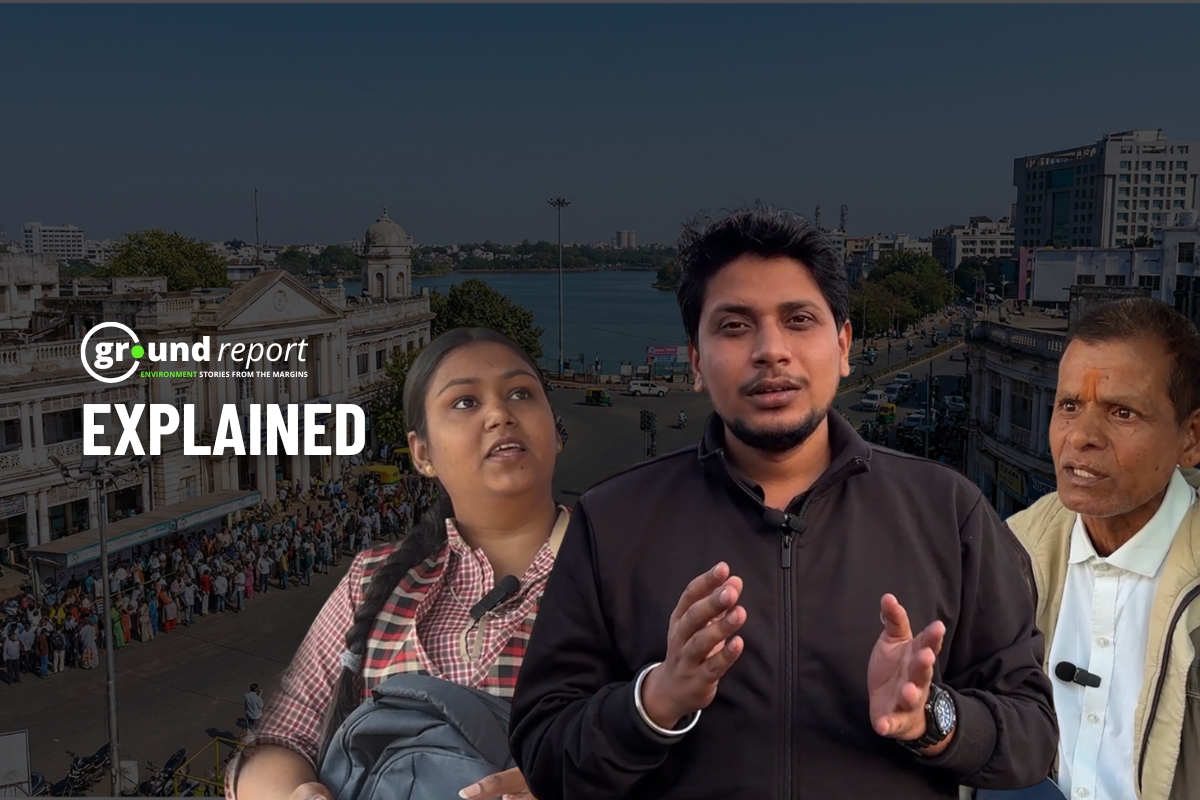The district court of Varanasi has given permission for a survey in Gyanvapi Mosque. The court has appointed two lawyers as commissioners for the survey. The team has been given time to submit the report by May 17.
Civil Judge Diwakar, while pronouncing the verdict, said that ‘an atmosphere of fear is being created by making the civil case an extraordinary case.
“The time has been fixed but the date is for the commissioners to decide on which day they will do it. They can do it daily if they want,” said Sudhir Tripathi, counsel for the Hindu petitioners.
As per Sudhir Tripathi, “Commissioner Ajay Kumar had gone for inspection on 6 and 7 May. He tried to go inside the mosque but he could not go inside due to people’s protest.
There was also a demand for the removal of Commissioner Ajay Kumar from the court, which has been rejected by the court. Advocate Sudhir Tripathi says, “The court has said that even if no party is present, commission action will be taken.”
This week the court was hearing an objection to the videography being done inside the mosque. The mosque management committee had also objected to the alleged discriminatory behaviour of survey officer Ajay Kumar Mishra.
Historians about Gyanvapi Mosque
The Gyanvapi Mosque in Banaras, Uttar Pradesh was built on the site of an old Shiva temple that was demolished by Aurangzeb in 1669.
Historian Audrey Truschke, in her book “Aurangzeb: The Man and the Myth”, said: “It is my understanding that the Gyanvapi Mosque was actually built during the reign of Aurangzeb. The mosque includes the Old Vishwanath temple structure – Aurangzeb’s orders But it was destroyed, as was its Qibla wall. Although the mosque dates back to the time of Aurangzeb, we don’t know who built it.”
She continued: “The Gyanvapi Mosque still remains in Banaras today, with a portion of the temple wall included in the building. This reuse may have been a religiously worn statement about the dire consequences of resisting Mughal power.”
According to historians, in 1669, the Mughal Emperor Aurangzeb had built the Gyanvapi Mosque on that spot. The temple has been demolished and rebuilt several times throughout history.
Some historians have said that both the Kashi Vishwanath Temple and the Gyanvapi Mosque were built by Akbar to carry out his Din-i-Ilahi system. Din-i-Ilahi was a religious belief system introduced by Akbar in 1582 AD.
what is the matter
On 18 August 2021, five women from Delhi filed a petition in a Benaras court. They say that they should be allowed to have darshan on the temple premises, worship and have darshan of Maa Shringar Gauri, Lord Ganesha, Lord Hanuman, Adi Visheshwar, Nandiji and other deities in the mosque premises.
They also demand that the Anjuman Intezamiya Mosque be stopped from vandalizing, breaking or damaging the idols of the deities.
These women had also made a separate application in their petition and demanded that the court appoint an advocate commissioner to ensure the existence of the idols of all these deities.
After this, the trial court appointed local lawyer Ajay Kumar as Advocate Commissioner and ordered videography of inspection and inspection of the premises.
After this, on Friday, a team of lawyers appointed by the court reached the mosque for inspection, which was strongly opposed.
The management of Anjuman Intejamia Masjid in Banaras is opposing the appointment of lawyers. The management had also filed a petition in the High Court regarding this, which was rejected by the court.
Demolition of Vishweshwar Temple
The site originally contained a Vishweshwara temple, founded by Todar Mal along with Narayan Bhatt – the head of the most famous Brahmin family of Banaras – in the late sixteenth century.
Veer Singh Deo Bundela, a close associate of Jahangir, was a possible patron in the early seventeenth century and he renovated the temple to some extent. The exact details of the history of the temple and the site are somewhat debated.
The Gyanvapi Mosque was painted by James Prinsep as the temple of Vishweshwara, Banaras. The original wall of the now-demolished temple still stands in the mosque.
Around 1669, Aurangzeb ordered the demolition of the temple and began the construction of the Gyan Vapi mosque in its place. The base of the temple was left largely untouched and continued to serve as the courtyard of the mosque; The southern wall (with its curved arches, exterior mouldings and pylons) was also spared and converted into the Qibla Wall.
Among these surviving elements is the influence of the Mughal architectural style on the original temple.
Timeline
In 1991, the first petition, in this case, was filed in the Varanasi Court by the self-styled Jyotirlinga Lord Vishweshwar.
In 1998 the Anjuman Intejamia Masjid Committee filed a case in the Allahabad High Court. The committee, in its petition before the court, said that the temple-mosque land dispute could not be decided by a civil court as it was barred by law.
In 2019, a petition was filed by a person named Rastogi on behalf of the self-styled Jyotirlinga Lord Vishweshwar in the Varanasi District Court. The petitioner demanded that an archaeological survey of the entire Gyanvapi mosque complex should be conducted.
In 2020, the Anjuman Intejamiya Masjid Committee opposed the petition seeking an ASI survey of the entire Gyanvapi complex. In the same year, the petitioner again approached the lower court with a petition, requesting a resumption of the hearing as the Allahabad High Court had not extended the adjournment.
In 2021, the city court ordered the Archaeological Survey of India to conduct the requested survey. In addition, a five-member committee of experts in archaeology was asked to be formed, consisting of two members from the “minority community”, to determine whether a temple existed at the site prior to the mosque.
You can connect with Ground Report on Facebook, Twitter, Instagram, and Whatsapp and Subscribe to our YouTube channel. For suggestions and writeups mail us at GReport2018@gmail.com
Also Read









